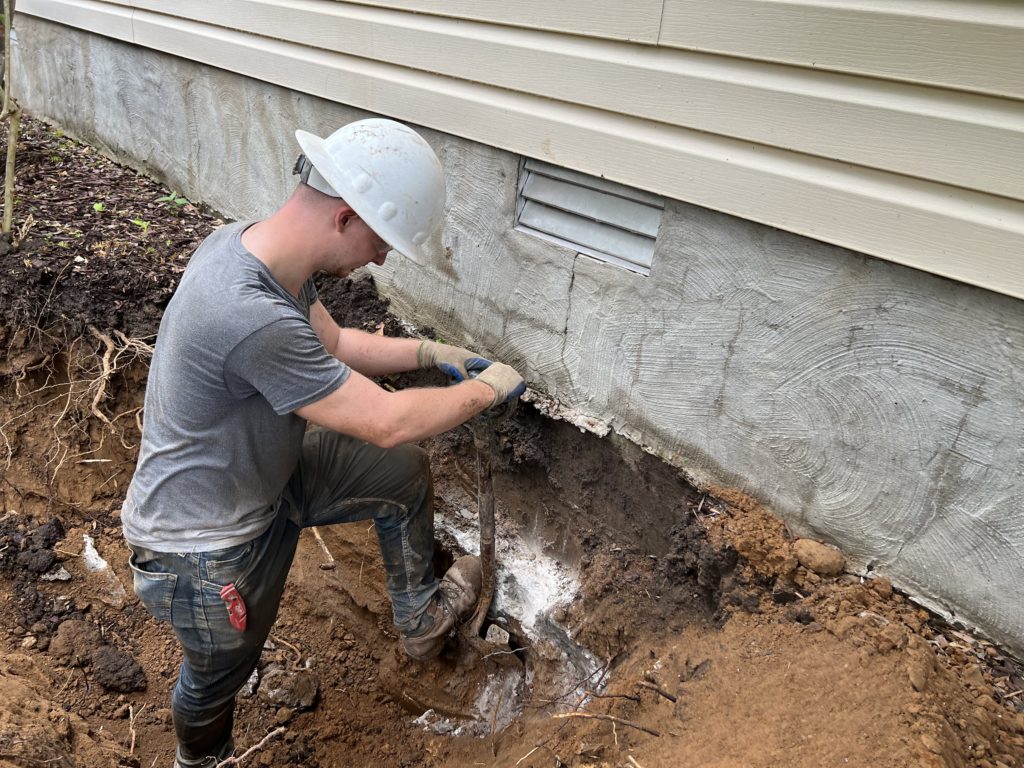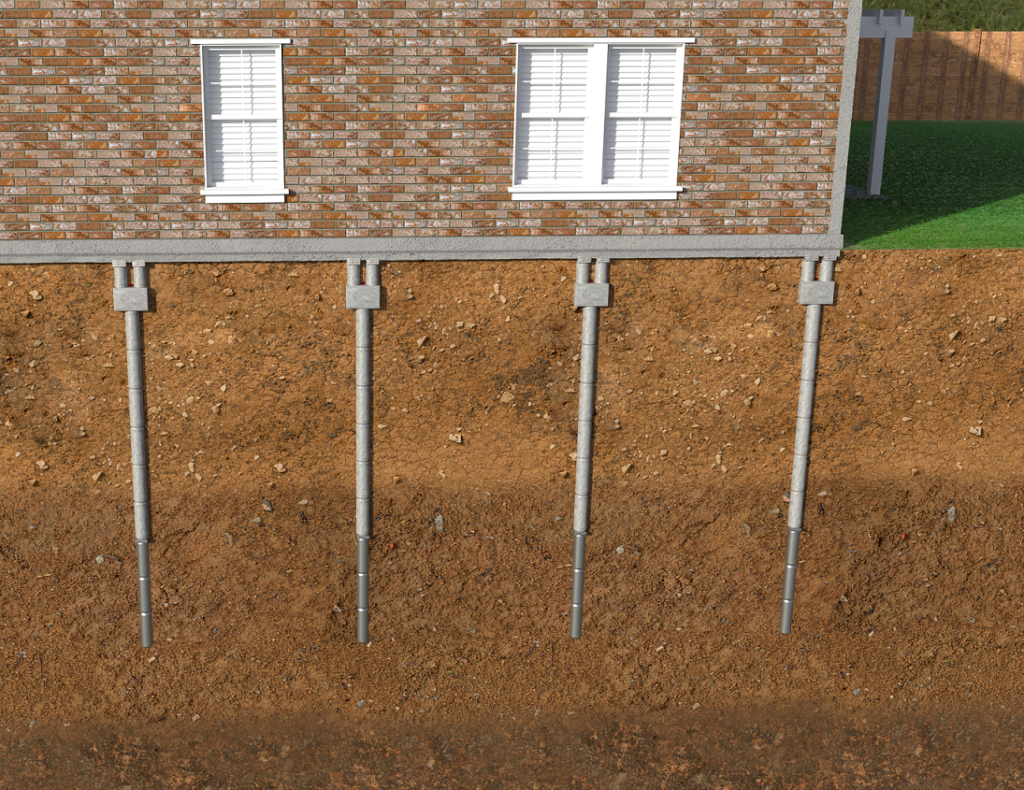The Ultimate Solutions for Foundation Repair Oklahoma City: Expert Insights
The Ultimate Solutions for Foundation Repair Oklahoma City: Expert Insights
Blog Article
Checking Out Various Methods of Structure Fixing for Different Dirt Kinds
Foundation repair work is an essential aspect of maintaining architectural honesty, specifically when taking into consideration the varied difficulties posed by different soil types. The intricacy of soil actions under varying problems necessitates a customized approach to fix, making sure ideal services such as helical piers for unsteady dirts or chemical cements for cohesive layers.
Understanding Soil Types
Soil types play a vital duty in the stability and long life of building structures, making it crucial for property owners and construction professionals to understand their qualities and behavior. The communication between dirt and foundation can establish the structural honesty of a building. There are several dirt types, each with distinctive physical residential or commercial properties that affect just how structures are made and preserved.
Granular dirts, such as sand and gravel, give good drainage and are typically taken into consideration secure. In comparison, cohesive soils like clays and silts exhibit various behaviors.
Rocky dirts, understood for their strength and stability, offer outstanding support for foundations but may require specific tools for excavation. Alternatively, fertile soils, which are a well balanced blend of clay, sand, and silt, frequently supply beneficial problems for foundation assistance due to their modest drainage homes.

Understanding these dirt kinds is critical for selecting suitable foundation repair service methods, making certain the toughness and safety and security of structures in time.
Difficulties With Extensive Clay
Among the numerous soil kinds, extensive clay provides distinct challenges for foundation stability because of its propensity to undertake considerable volume modifications with wetness variation. This kind of dirt swells when damp and contracts when dry, which can apply significant stress on frameworks. These changes can result in structure fracturing, heaving, and negotiation problems, presenting substantial dangers to the structural stability of buildings.
The challenges with extensive clay are aggravated by its plasticity index, which measures the dirt's capability to alter shape and quantity. A high plasticity index indicates better capacity for motion, boosting the possibility of damage to structures. This is specifically troublesome in regions experiencing constant or severe weather condition modifications, where cycles of damp and completely dry problems prevail.
Moreover, the depth of expansive clay layers can vary, making complex the assessment and preparation of proper foundation fixing approaches. These intricacies require an extensive geotechnical examination to make certain efficient structure fixing methods are carried out, emphasizing the relevance of resolving expansive clay difficulties with experience and treatment.
Solutions for Sandy Soils
Sandy soils, identified by their big bit size and reduced cohesion, present distinctive obstacles for foundation stability due to their propensity for shifting and erosion. By anchoring the foundation to deeper, much more secure soil layers, these systems can offer the essential assistance to neutralize the shifting nature of sandy soils.
Another advised approach is the application of dirt stablizing approaches. Chemical grouting, as an example, entails infusing a stabilizing representative into the soil, which enhances communication and lowers leaks in the structure. This procedure aids to solidify the sandy substrate, thereby lessening the danger of erosion and movement.
Additionally, installing appropriate water drainage systems is essential in sandy dirt conditions. Making sure adequate drainage can stop water buildup around the structure, which usually intensifies disintegration and soil displacement. Techniques such as French drains pipes or surface area grading can be used to guide water away from the building boundary.
Addressing Settling in Loamy Soils
Fertile dirts, recognized for their well balanced mix of silt, clay, and sand, use a productive base for numerous structures yet can in some cases cause structure settling because of their distinct make-up. This well balanced structure provides exceptional drainage and nutrient retention, making it ideal for farming and landscaping. This same feature can become problematic for foundations, as changes in moisture content can create the dirt to broaden or agreement, leading to clearing up.
Addressing clearing up in loamy soils needs a diverse strategy. Exact dirt testing is crucial to figure out the certain composition and wetness web content of the loam. When data is gathered, carrying out correct water drainage services is vital to preserve constant dampness degrees, thereby minimizing the risk of dirt tightening or growth. French drains or surface grading are efficient approaches to redirect water far from the foundation.

Innovative Repair Work Methods
In the realm of foundation fixing, here innovative techniques are continually being created to address the complicated tests posed by numerous soil problems. As soil kinds differ considerably in their architectural homes, typical methods may not always are enough. The arrival of brand-new technologies in structure repair work offers extra customized solutions, ensuring stability and long life.
One notable technology is the usage of helical piers, which are especially effective in large or unsteady dirts (foundation repair Oklahoma). These piers are screwed right into the ground until they reach a stable layer of dirt, using strong support for the foundation above. This technique reduces disturbance and is versatile to different soil types, making it a flexible service
Another cutting-edge technique is the application of polyurethane foam injection. This method entails injecting high-density polyurethane foam below the foundation to fill spaces and support the framework. It is a much less intrusive option to typical underpinning, offering quick installation with very little disruption to the surrounding area.
Additionally, soil stabilization methods, such as using chemical cements, have Our site gained traction. These compounds improve soil stamina and minimize leaks in the structure, protecting against future moving. Collectively, these innovative repair work methods supply reliable solutions for the diverse challenges presented by differing soil conditions.
Conclusion

Structure fixing is a vital aspect of preserving architectural integrity, especially when considering the diverse difficulties postured by various soil types (foundation repair okc ok). The complexity of soil actions under differing conditions necessitates a customized approach to repair, making certain optimum solutions such as helical piers for unstable soils or chemical grouts for cohesive layers. By anchoring the foundation to much deeper, extra stable dirt layers, these systems can provide the needed assistance to neutralize the changing nature of sandy soils
Foundation repair service calls for mindful factor to consider of soil kinds to guarantee stability and durability. Chemical grouts boost dirt strength and lower leaks in the structure in natural dirts.
Report this page